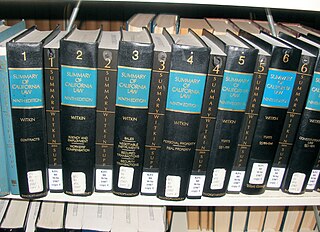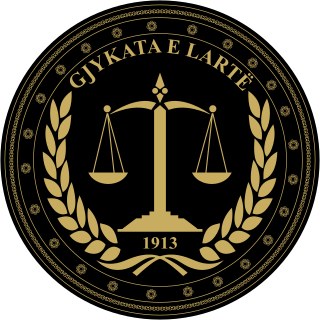This article needs additional citations for verification .(November 2016) (Learn how and when to remove this template message) |
The Reporter of Decisions (sometimes known by other titles, such as Official Reporter or State Reporter) is the official responsible for publishing the decisions of a court. Traditionally, the decisions were published in books known as case reporters or law reports. In recent years, the reporter's duties have been broadened in many jurisdictions to include publication through electronic media.

A court is any person or institution with authority to judge or adjudicate, often as a government institution, with the authority to adjudicate legal disputes between parties and carry out the administration of justice in civil, criminal, and administrative matters in accordance with the rule of law. In both common law and civil law legal systems, courts are the central means for dispute resolution, and it is generally understood that all people have an ability to bring their claims before a court. Similarly, the rights of those accused of a crime include the right to present a defense before a court.
In the United States, the most prominent Reporter of Decisions is the Reporter of Decisions of the Supreme Court of the United States, an officer of the Supreme Court of the United States, responsible for reporting the decisions of that court in the official report volumes, known as the United States Reports . In contrast, the United States courts of appeals have not historically appointed official reporters of decisions, relying instead on the private company West Publishing to report appellate decisions in its Federal Reporter series. [1]

The United States of America (USA), commonly known as the United States or America, is a country comprising 50 states, a federal district, five major self-governing territories, and various possessions. At 3.8 million square miles, the United States is the world's third or fourth largest country by total area and is slightly smaller than the entire continent of Europe. With a population of over 327 million people, the U.S. is the third most populous country. The capital is Washington, D.C., and the most populous city is New York City. Most of the country is located contiguously in North America between Canada and Mexico.

The Reporter of Decisions of the Supreme Court of the United States is the official charged with editing and publishing the opinions of the Supreme Court of the United States, both when announced and when they are published in permanent bound volumes of the United States Reports. The Reporter of Decisions is responsible for only the contents of the United States Reports issued by the Government Printing Office, first in preliminary prints and later in the final bound volumes. The Reporter is not responsible for the editorial content of unofficial reports of the Court's decisions, such as the privately published Supreme Court Reporter or Lawyers' Edition.

The Supreme Court of the United States (SCOTUS) is the highest court in the federal judiciary of the United States. It has ultimate appellate jurisdiction over all federal and state court cases that involve a point of federal law, and original jurisdiction over a narrow range of cases, including suits between two or more states and those involving ambassadors. The Court holds the power of judicial review, the ability to invalidate a statute for violating a provision of the U.S. Constitution. It is also able to strike down presidential directives for violating either the Constitution or statutory law. However, it may act only within the context of a case in an area of law over which it has jurisdiction. The Court may decide cases having political overtones, but it has ruled that it does not have power to decide non-justiciable political questions.
In many jurisdictions, older collections of case reports are known by the name of the reporter who served during the time when they were collected.
This Wikipedia needs a legal scholar to write on this topic in more depth. Here is an additional link in the meanwhile : https://www.fjc.gov/history/administration/court-officers-and-staff-reporter-decisions












